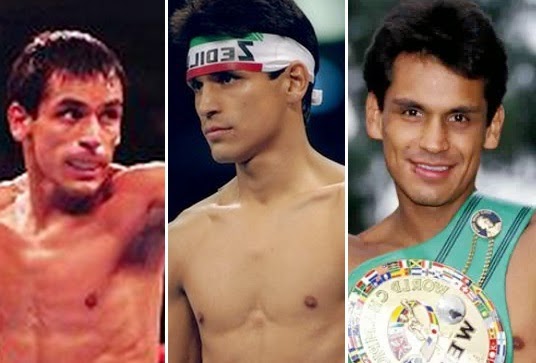

He lost a number of his biggest fights – all to current or future Hall of Famers - but he also had many important victories. He won 10 major titles in six divisions, from junior lightweight to middleweight.

Lost to: Felix Trinidad, Shane Mosley (twice), Bernard Hopkins, Floyd Mayweather, Manny Pacquiaoīackground: De La Hoya was the complete package – a magnetic figure outside the ring and a beast in it, which made him the biggest star in the sport in the 1990s and into the 2000s. Today, it is no wonder that the sport of boxing has become so immensely popular throughout all of Mexico.Titles: WBO junior lightweight (1994), WBO lightweight (1994-96), IBF lightweight (1995), WBC junior welterweight (1996-97), WBC welterweight (1997-99), WBC welterweight (2000), WBC junior middleweight (2001-03), WBA junior middleweight (2002-03), WBO middleweight (2004) and WBC junior middleweight (2006-07)ĭefeated: Rafael Ruelas, Genaro Hernandez, James Leija, Julio Cesar Chavez (twice), Pernell Whitaker, Hector Camacho, Ike Quartey, Fernando Vargas
Boxer from mexico professional#
Febles, who was also a jujutsu fighter, trained as a boxer in Cuba, at a boxing academy established by Chiles first professional boxer, John Budinich. Background: Garcia is the crown jewel in a boxing family, one in which his father (Eduardo) guided brother Robert Garcia to a world title. 14 Mexican boxers have also been written into the International Boxing Hall of Fame, including Julio César Chávez, whom many consider to be one of the best boxers, in the history of the sport. Miguel Ángel Febles, also known as Mike Febles or 'León Veracruzano' (Lion of Veracruz), is credited as being the first professional Mexican boxer. Defeated: Jonathan Victor Burgos (twice), Orlando Salido, Juan Manuel Lopez, Roman Martinez, Dejan Zlaticanin, Adrien Broner, Sergey Lipinets, Robert Easter Jr., Jessie Vargas. In fact, Mexico has produced more world boxing champions than any other nation. This list of Mexican boxers is alphabetical, but can be sorted by any column and answers the question 'what famous boxers are from Mexico' You can. List includes the most notable boxers from Mexico, along with photos when available. Hundreds of amateur and professional boxing world champions have come from Mexico. List of the most popular, renowned or famous boxers from Mexico. Featherweight champion, Wilfredo Gomez, made the pre-fight proclamation of "standing or dead, but never on my knees." The event, at the Caesars Palace hotel on the Las Vegas Strip, was highly publicized as "The battle of the little giants." Ironically, Gomez was left kneeling and bleeding, after a technical knockout, in the eighth round, by Mexico's lesser known WBC world Featherweight champ, Salvador Sanchez. The rivalry appears to have begun in 1981, when Puerto Rican boxing celebrity, and Jr. A long standing rivalry, started by little giantsįor decades, there has been an ongoing rivalry between Mexican and Puerto Rican boxers. In 1932, at the summer games in Los Angeles, Francisco Cabañas Pardo was the first Mexican boxer to earn an Olympic medal. He has held the WBC flyweight title since 2019. In 1915, Febles returned to Mexico to continue his fighting career. Julio Cesar Martinez Aguilar (born 27 January 1995) is a Mexican professional boxer. Febles, who was also a jujutsu fighter, trained as a boxer in Cuba, at a boxing academy established by Chile's first professional boxer, John Budinich. Miguel Ángel Febles, also known as Mike Febles or "León Veracruzano" (Lion of Veracruz), is credited as being the first professional Mexican boxer. The development of Mexican professional boxing The first Mexican boxing commission was formed in Tampico, in 1921, to add some regulation the dangerous sport, after numerous accidents had already happened. In these early match-ups, the competitors would wrap napkins around their fists, and hats would be passed amongst the spectators to collect drinking money.

Napkin wrapped beginnings of amateur boxing in MexicoĪmateur boxing in Mexico first began around 1918, in Tampico and other port cities along the Gulf of Mexico, where seafaring mariners would set up make-shift boxing rings, marked by four chairs, at the local bordellos where they spent most of their time ashore.


 0 kommentar(er)
0 kommentar(er)
